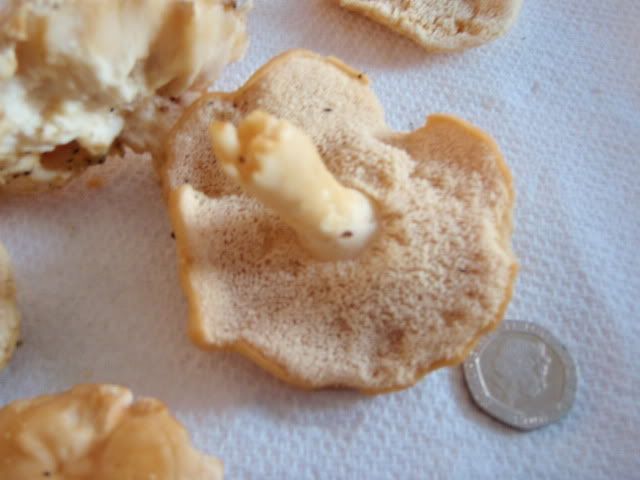In order to be able to stand a decent chance of IDing these, you need to supply a cross-section photo. It is crucial to be able to see exactly how the gills are attached to the stem. Also, always try smelling the mushroom. The smell is not always distinctive, but if it is, then it can make identification a lot easier.ndyuk wrote:I found several of these mushroooms clustered together in a conifer/pine forest, sandy soil. I tried collecting the spore deposit, but I feel I did something wrong??? After leaving the cap under a glass, half of it on white paper, half of it on black, I had collected no spores after 3 hours. Checking it this morning however, it had left a black residue on the white paper where a damaged section of the mushroom had been laying (Are these the spores? I am a beginner). Its diameter is aprox. 5 cm and it stood about 10 cm off the ground. It is creamy white in colour with shades of light brown on the top. It has true gills which are very thin.
Oddly enough, these also look like Collybia maculata - younger ones. But there's other things they could also be.



